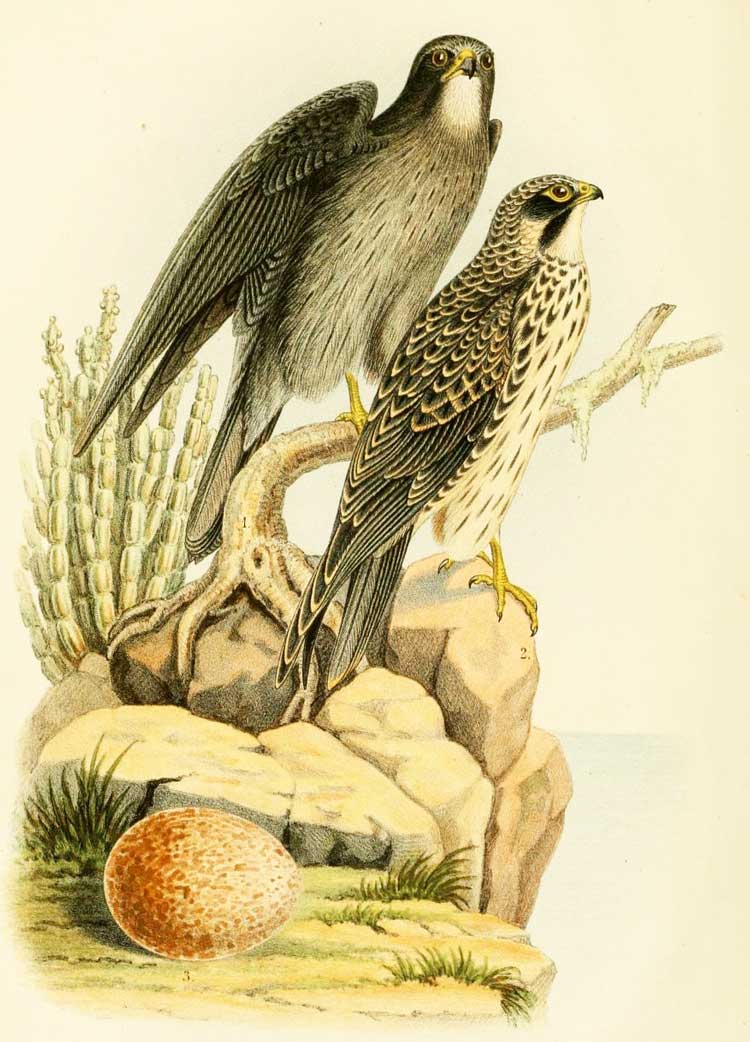Falco concolor Cladus: Eukaryota Name Falco concolor Temminck, 1825 Reference Nouveau recueil de planches coloriées d'oiseaux livr.56 pl.330,text Vernacular names The Sooty Falcon (Falco concolor ) is a medium-sized falcon breeding from northeastern Africa to the southern Persian Gulf region. It belongs to the hobby group, a rather close-knit number of similar falcons often considered a subgenus Hypotriorchis. Eleonora's Falcon is sometimes considered its closest relative, but while they certainly belong to the same lineage, they do not seem to be close sister species[1]. This is an elegant bird of prey, 32–37 cm long with a 78–90 cm wingspan. It is shaped like a large Hobby or a small Eleonora's Falcon, with its long pointed wings, long tail and slim body. The adults are blue-grey, and lack the black underwing coverts of the Eleonora’s Falcon. The young bird is like a large juvenile Hobby, or small juvenile Eleanora’s Falcon. Its dark trailing edge to the wings and tail distinguish it from the former species, and it lacks the underwing contrast caused by the dark coverts of the larger falcon. This species breeds on islands and coastal or desert cliffs from Libya to Pakistan). It is a long-distance migrant, wintering in east Africa and south to Madagascar. It is a rare vagrant north of its breeding range. The Sooty Falcon eats mainly birds, but it will take large insects, such as dragonflies, which are transferred from talons to beak and eaten in flight. It nests on a ledge or on rocks, laying up to four eggs. It was formerly classified as a Species of Least Concern by the IUCN[2]. But new research has shown it to be rarer than it was believed. Consequently, it is uplisted to Near Threatened status in 2008[3]. Footnotes 1. ^ Helbig et al. (1994), Wink et al. (1998)
* BirdLife International (BLI) (2004). Falco concolor. 2006. IUCN Red List of Threatened Species. IUCN 2006. www.iucnredlist.org. Retrieved on 12 May 2006. Database entry includes justification for why this species is of least concern Source: Wikispecies: All text is available under the terms of the GNU Free Documentation License |
|

